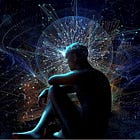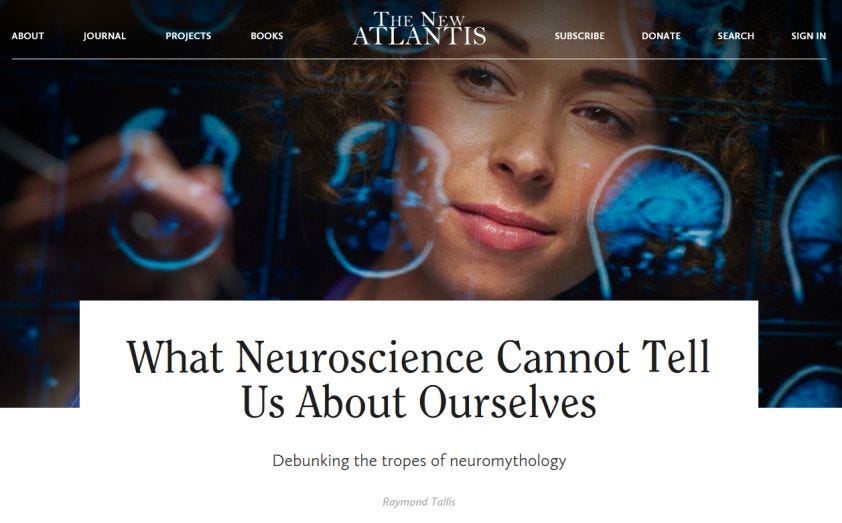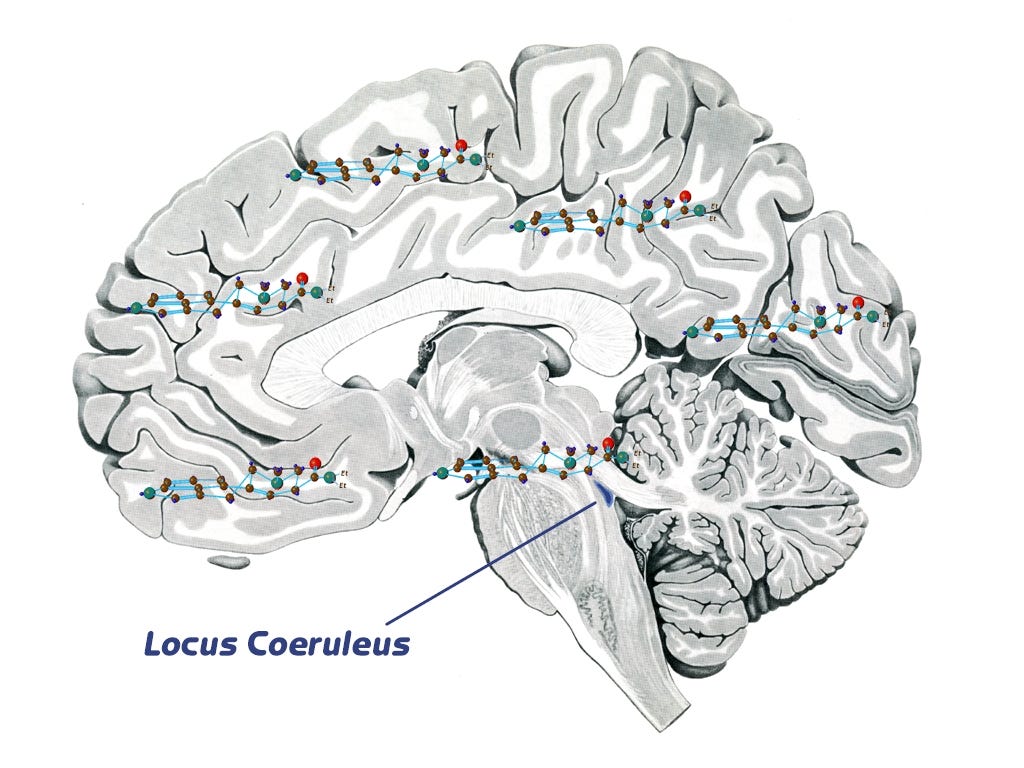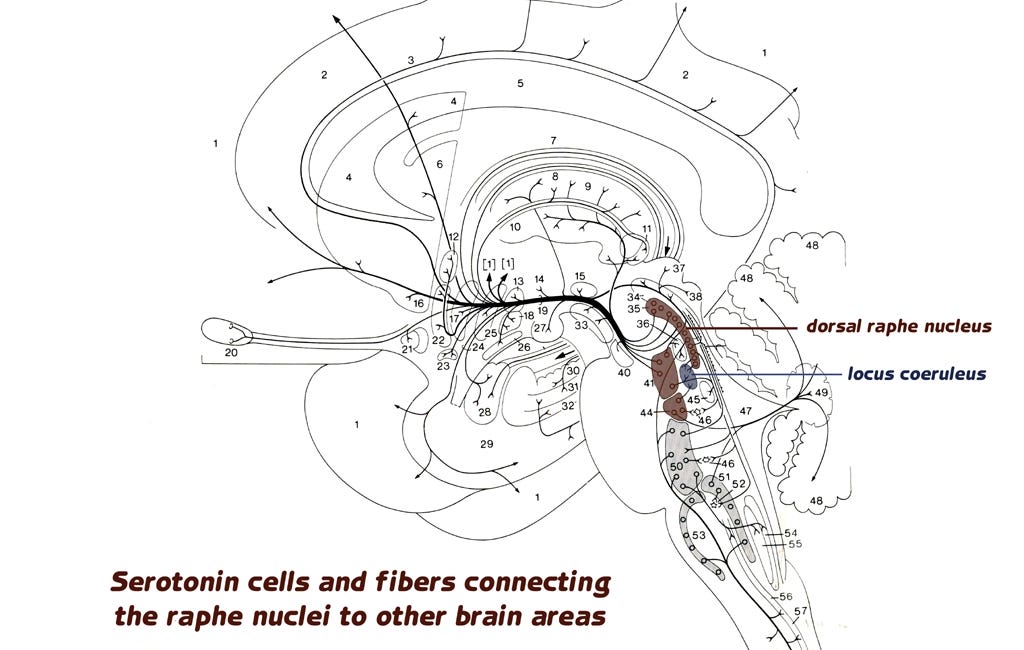Awakenings V
Brains doing their thing (This post is too long for email, please read it at the substack link - Click the title above)
“All brains gather intelligence; to lesser or greater extents, some brains acquire a state of mind. How and where they find the means to do so is the question raised by poets and philosophers, doctors of divinity and medicine who have been fooling around with it for the past five thousand years and leave the mystery intact. It’s been a long time since Adam ate of the apple, but about the metaphysical composition of the human mind, all we can say for certain is that something unknown is doing we don’t know what.” — Lewis H. Lapham
Introduction
Scientific disciplines, as they mature, tend to coalesce around a set of central concepts, theories, key experimental findings, practices, applications, research agendas and methods, paradigms... Active scientists as well as the scientifically-literate and interested public will surely have read Thomas Kuhn's masterpiece The Structure of Scientific Revolutions from which the term paradigm has entered general use. Kuhn writes,
...Close historical investigation of a given specialty at a given time discloses a set of recurrent and quasi-standard illustrations of various theories in their conceptual, observational, and instrumental applications. These are the community’s paradigms, revealed in its textbooks, lectures, and laboratory exercises. By studying them and by practicing with them, the members of the corresponding community learn their trade.
Kuhn defines a paradigm in its simplest terms as “one or more past scientific achievements that some particular scientific community acknowledges for a time as supplying the foundation for its further practice.” We may think of a paradigm as defining a mandatory way for approaching scientific problems at a given time and in a given discipline. The paradigm is the stage upon which the play of scientific investigation takes place – a platform which underlies and defines the setting, context, limitations, and boundaries for the research agenda. Although the paradigm may become thought of as an accurate description of an aspect of reality, even a close approximation of the truth, in practice the paradigm is more like a map or model, an approximation or framework for organizing currently available data and defining permissible research.
It may seem odd to talk about “permissible research”, for the picture we may have of science and scientists is one of freedom of enquiry — the idea that at least some scientists explore reality with no holds barred, wherever their search for truth leads them. But Kuhn shows this to be a myth. Operating within the framework of a given scientific paradigm, the actual situation is quite different than the myth. Kuhn writes,
A paradigm suppresses innovation, it can even insulate the community from those socially important problems that are not reducible to the puzzle form typical of normal science, because they cannot be stated in terms of the conceptual and instrumental tools the paradigm supplies.
"Normal science" is what practically all scientists do all the time when no scientific revolution is imminent, and in description it may sound rather banal to the uninitiated: it consists essentially of a “mopping-up” operation where the details of a given paradigm and its allowed applications are elaborated with greater and greater precision. It seems, as Kuhn says,
…an attempt to force nature into the preformed and relatively inflexible box that the paradigm supplies. No part of the aim of normal science is to call forth new sorts of phenomena; indeed, those that will not fit the box are often not seen at all. Nor do scientists normally aim to invent new theories, and they are often intolerant of those invented by others. Instead, normal-scientific research is directed to the articulation of those phenomena and theories that the paradigm already supplies.
Disarray
Cognitive neuroscience is in disarray. The neural mechanisms of locomotion, navigation, and manipulation of objects are well in hand, as witnessed by advances in information technology, robotics and space exploration. What we lack is an understanding of the mechanisms of mind... For examples, we do not understand how brains make and use symbols, or how natural languages work, or how to solve the framing problem, or how to illuminate the mysteries of consciousness...1
I have briefly reviewed the fundamental theme of Structure because it is quite evident to a few well-informed outsiders that the scientific discipline of Cognitive Neuroscience and its sub-disciplines of Consciousness Science and the two-thousand+year-old quest to understand the mind-body problem is at one of those notorious but often prolonged meltdown moments when a paradigm shift must necessarily occur, and the fundamentals of a science become subject to a revolution. The status quo, as is usual and to be expected, is being vehemently supported by all those scientists with a life-long investment in the failing paradigm. Indeed, it is a thankless task even to suggest to many of them that there might be a problem.
The failings of cognitive and consciousness science are manifold and plainly obvious to the few who have explored the territory. As Kuhn notes, paradigm shifts and scientific revolutions are most often ignited by a few outsiders to a discipline, often youngsters who have not been tainted with the habits of mind resulting from extended study and uncritical acceptance of the paradigms of a discipline. We have now of a sort, a group of young (some old too!) unruly outsiders protesting at the gates of a Babelesque Ivory Tower where reside "the experts", in no mood to discuss the matter. Research grants, professorships and tenure depend on maintaining their in-crowd status and fending off challengers, whenever possible by simply ignoring them completely. Paradigm disarray might well result in many of the in-crowd running out of material to publish.
So what is the failing paradigm that needs to be overturned, and what candidates exist for a new defining structure?
Howard Margolis in Paradigms and Barriers, and Patterns, Thinking, and Cognition has made a strong case that in many instances a paradigm and its tributaries are maintained through a single "habit of mind" that acts as a barrier to considering alternatives. In the case of Cognitive Neuroscience and its associated disciplines the following generality, adopted by the great majority of contemporary scientists sums up the situation:
It's all down to the brain... all cognitive activity, all conscious and unconscious behaviours are derived in the brain... caused by the brain, the brain determines behaviour, produces consciousness. Francis Crick put it boldly:
You, your joys and sorrows, your memories and ambitions, your sense of personal identity and free will are, in fact, no more than the behaviour of a vast assembly of nerve cells and their associated molecules... A person’s mental activities are entirely due to the behaviour of nerve cells, glial cells, and the atoms, ions, and molecules that make them up and influence them. [italics mine]2
A worthwhile discussion of Crick's position can be read here
And Daniel Dennett, another major spokesman for the neuroevolutionary reduction of human beings and their minds: In Consciousness Explained he writes,
...there is only one sort of stuff, namely matter — the physical stuff of physics, chemistry, and physiology — and the mind is somehow nothing but a physical phenomenon. In short, the mind is the brain….
For a critical review of Dennett's 5 decades of attempting to "explain" consciousness see "The Illusionist"
In other words, a strictly physical brain state or series of states is the absolute and only cause of everything going on with the owner of that brain. This scientific-philosophical position is called psychophysical reductionism. It derives from the hypothesis of scientific naturalism, defined by Perplexity AI as
...the philosophical view combining two main claims: first, that nature is all there is — there is no supernatural realm beyond nature — and second, that all objects, processes, truths, and facts about nature can be fully understood through the scientific method. This means everything that exists is part of the natural world and can, in principle, be explained by natural laws and scientific investigation...Scientific naturalism often implies that humans are entirely natural beings and that scientific explanations, such as evolution and physics, suffice to explain all phenomena.
It is necessarily a hypothesis since there would be no conceivable way to use scientific naturalism (if as claimed it is all that there is) to either prove — or disprove itself!
In this excellent essay, Raymond Tallis exposes the “Tropes of Neuromythology”:
[The] aim of this essay is to give principled reasons, based on examining the nature of human consciousness, for asserting that we are not now and never will be able to account for the mind in terms of neural activity.... Moreover, there is strong reason to believe that the failure to provide a neuroscientific account of the sufficient conditions of consciousness and conscious behaviour is not a temporary state of affairs. It is unlikely that the gap between neuroscientific stories of human behaviour and the standard humanistic or common-sense narratives will be closed, even as neuroscience advances and as our tools for observing neural activity grow more sophisticated.
Please take the time to read the entire essay, for it is, as in current trivial social media parlance, a "bombshell". Thoroughly digested, Tallis' exposé should allow no retreat to the naive materialism of "it's all down to the brain" even when one realizes one is thus among the unruly protesters being refused a hearing by the ivory tower in-crowd.
And for those who might have suddenly taken a liking for Tallis' thinking:
Aping Mankind by Raymond Tallis
Chapter Three : Neuromania: A Castle Built on Sand
Here, Professor Tallis takes particular delight at demolishing the widely-claimed significance of brain scans for "proving" all sorts of (mis)conceptions about cognition and consciousness.
It is surprising that the world has not wearied of stories of findings by neuroscientists that are supposed to cast light on our true nature. Popular articles — which are often heavily dependent on press releases provided by the public relations departments of grant-hungry laboratories — are usually accompanied, as we have noted, by a brain scan. These are seen as visible proof that those clever boffins have discovered the neural basis of love (maternal, romantic, unconditional), altruism, a propensity to incur toxic debts and so on. And that’s just for starters. The sociologist Scott Vrecko has listed neurobiological accounts of (take a deep breath) in alphabetical order: altruism, borderline personality disorder, criminal behaviour, decision-making, empathy, fear, gut feelings, hope, impulsivity, judgement, love (see above for varieties of), motivation, neuroticism, problem gambling, racial bias, suicide, trust, violence, wisdom and zeal (religious). The extent of neuromanic imperialism is astounding.
A review of the book is here
...and there is more, much more. Consider the following take-down of the claim that the brain stores memory traces:
Memory Without a Trace
...or the following which shows that biological reductionism has produced confusions and outright misinformation about genetics and evolutionary biology as well,
“The Illusions of the Modern Synthesis", by Denis Noble
Also available here
Other excellent sources for instilling doubt about biological determinism:
Not In Our Genes - Biology, Ideology, And Nature by R C. Lewontin, Steven Rose, and Leon J. Kamin. Pantheon Books. New York. 1984
...and one of the most important books ever written on such topics:
Mind and Cosmos: Why the Materialist Neo-Darwinian Conception of Nature Is Almost Certainly False, by Thomas Nagel. Oxford University Press, 2012
A review by Professor Tallis can be read here: Bringing Mind to Matter
You Can't Go Home Again
OK then, if the reader has comprehended the problem of understanding consciousness within the confines of the "it's-all-down-to-the-brain" paradigm and — specifically for the purposes of the Awakenings Series, just why psychedelic science and an understanding of psychedelic consciousness is similarly dragged into a nonsensical position, remember back to my analogy in Awakenings IV about McEnroe's forehand smash, and the grad students who were cracking its mysteries using arm scans. As a first, and intentionally simple replacement for the "it's all down to the brain (and genes)" paradigm I suggest this:
I, that mysterious first-person entity that only a few disbelieve in, the I that has intentionally been excluded from scientific investigation in favor of "objectivity", that first person entity we are all intimately acquainted with...
I use my brain to accomplish behaviour, cognition, perception, thinking, day-dreaming et al., just as I use my arm to accomplish a tennis shot.
My arm does not play tennis, nor does my brain. I play tennis... and so on for all the features of consciousness. The problem, of course, is identifying who this I is. It is an ancient problem, and perhaps one that will remain mysterious for quite some time, if not indefinitely. But everyone who perceives that he/she is conscious already knows for sure who he/she is, true? Willis Harman again:
We must not minimize the fundamental nature of the challenge implicit in consciousness research. Western science is about understanding cause. It is a tenet of modern society that science can lead us toward the ultimate explanations for phenomena. However, the very conviction that a complete nomothetic science is possible—that everything can be ultimately explained through inviolable scientific laws—rules out consciousness (mind, spirit) as a causal reality. At the same time, everything in our personal experience affirms the importance of our ability to choose, and our deep inner guidance toward the better choice. This poses a fundamental dilemma. Either we must deny our own innate wisdom because "science knows better," or we have to face the fundamental inability of science in its present form (quantum physics and all) to give us an adequate cosmology to live by and to guide our society by. — Willis W. Harman — From his address to the First Tucson Consciousness Conference in 1994.
What we get at the end of it all is that behaviour, cognition, perception, thinking, day-dreaming et al., are voluntary. They are things that I DO, and you do too. The brain does not do these things. We do them with the assistance of our entire physical being, from arms to brains. Got it?
A Middle Ground
For the special case of psychedelic consciousness where there is an extra factor involved — the voluntary ingestion of a psychedelic chemical and the subsequent involuntary adherence of some of those psychedelic molecules to brain receptors, the problem is this: How to get from chemicals on brain neuroreceptors — a process that is essentially identical each time we take a similar dose of whatever chemical we are considering,
to this:
First, sensory perceptions become especially brilliant and intense. Normally unnoticed aspects of the environment capture the attention; ordinary objects are seen as if for the first time and acquire new depths of significance. Esthetic responses are greatly heightened: colors seem more intense, textures richer, contours sharpened, music more emotionally profound, the spatial arrangements of objects more meaningful. People may feel keener awareness of their bodies or sense changes in the appearance and feeling of body parts. Depth perception is often heightened and perspective distorted; inanimate objects take on expressions, and synesthesia (hearing colors, seeing sounds, etc.) is common. Time may seem to slow down enormously as more and more passing events claim the attention, or it may stop entirely, giving place to an eternal present. ...
The emotional effects are even more profound than the perceptual ones. The drug taker becomes unusually sensitive to faces, gestures, and small changes in the environment. As everything in the field of consciousness assumes unusual importance, feelings become magnified; love, gratitude, joy, sympathy, lust, anger, pain, terror, despair, or loneliness may become overwhelming, or two seemingly incompatible feelings may be experienced at once. It is possible to feel either unusual openness and closeness to others or exaggerated distance that makes them seem like grotesque puppets or robots.
[From the Introduction to Psychedelic Reflections, Lester Grinspoon and James B. Bakalar, Human Sciences Press, New York, 1983]
Due to the sameness of the first event no matter when nor where it occurs, but the staggeringly different characteristics of the supposed "effects", it is conceptually impossible to say the former causes the latter. So let us not call all the above "effects of psychedelics" but rather: Possible Features of the Psychedelic Experience.
A rather large and important part of the puzzle "how do we get from Figure 1 to the features" is missing. Obviously, something, some intermediate neurocognitive event or operation must exist, one that can be shown to be neurocognitively caused by the psycho-chemical. This neurocognitive event must also be, like the attachment of psychochemicals to receptors, involuntary. And then this intermediate event must then encourage or induce or enable the subject to voluntarily explore the great range of possible features of psychedelic experience. Notice that I have used the terms "encourage", "induce", and not "cause". Yes, in an important sense, the psychedelic experience must be voluntary. Otherwise it would be merely yet another Hollywood thriller or sci-fi extravaganza orchestrated by something or someone not the one doing the experiencing.
But I can hear a comment from the peanut gallery: "How do we get from Figure 1 to the features? That's EASY! SET AND SETTING!"
No, I'm afraid that solution is a non-starter, despite being oft-mentioned in many a scientific paper, conference lecture, authoritative book...
I see once again that mission creep has crept up on this chapter of Awakenings, it has reached a length beyond which I cannot expect my readers to bear gracefully.
So, I will announce here a brief Intermission! In the next chapter I will explain exactly what the intermediate neurocognitive process consists of, exactly how the neurochemicals cause that process, and show why set and setting explains nothing.
Awakenings VI
Perplexity AI: “The word salience derives from the Latin verb salire, meaning "to leap" or "to jump". The noun form comes specifically from the Latin present participle saliens, which means "leaping" or "bounding". This etymological root captures the sense of something that stands out, projects, or "leaps out" from its surroundings — a meaning that has …
Walter J. Freeman Journal of Integrative Neuroscience, Vol. 13, No. 2 (2014)
The Astonishing Hypothesis: The Scientific Search for the Soul, Simon & Schuster 1994
FIGURE 1: The human brain (right hemisphere shown from the perspective of the interhemispheric fissure), bathed in about 139,721,577,726,218,097 LSD molecules (100µg) which go on to attach themselves more or less temporarily to various brain receptors. Only a few LSD molecules shown, and not to scale!. The human brain may contain as many as 100 billion neurons in total, so we see there are plenty of LSD molecules to go around, even if only a small number from the 100µg dose actually arrive at the neuroreceptors involved with psychedelic experience.









